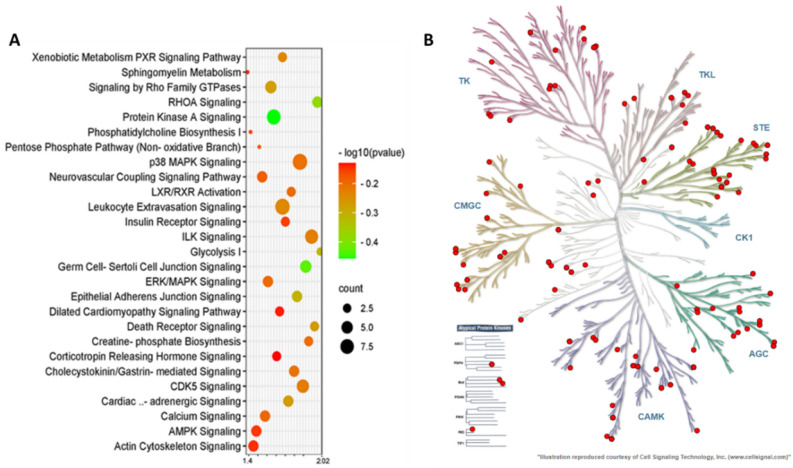Figure 4.
Top canonical pathway analysis and the kinome tree analysis of the adipose tissue phospho-proteome of postpartum (PP) dairy cows supplemented with ALA 20 min after glucose infusion. Dairy cows were divided into two groups from 21 to 60 days PP; (i) CTL—encapsulated saturated fat, (ii) ALA—flaxseed supplement providing α-linolenic acid (ALA). n = 5 per treatment. (A) Top canonical pathways associated with ALA supplementation of dairy cows on the Y-axis and—log (P-value) on the X-axis. The size and color of each bubble represent the number of peptides in each pathway and the P value, respectively. (B) The predicted kinases of phospho-proteome in ALA-supplemented AT as represented in the kinome tree using the kinmap server. The identified kinases of the Phosphoproteome of dairy cows are represented as follows: AGC PKA/PKG/PKC-family kinases, CAMK calcium/calmodulin-dependent kinases, CK1 casein kinases, CMGC CDK/MAPK/GSK3/CLK-family kinases, STE sterile homologue kinases, TK tyrosine kinases, TKL tyrosine kinase-like kinases. The kinases are separated and denoted as red circles on the branches of the tree based on their category.

